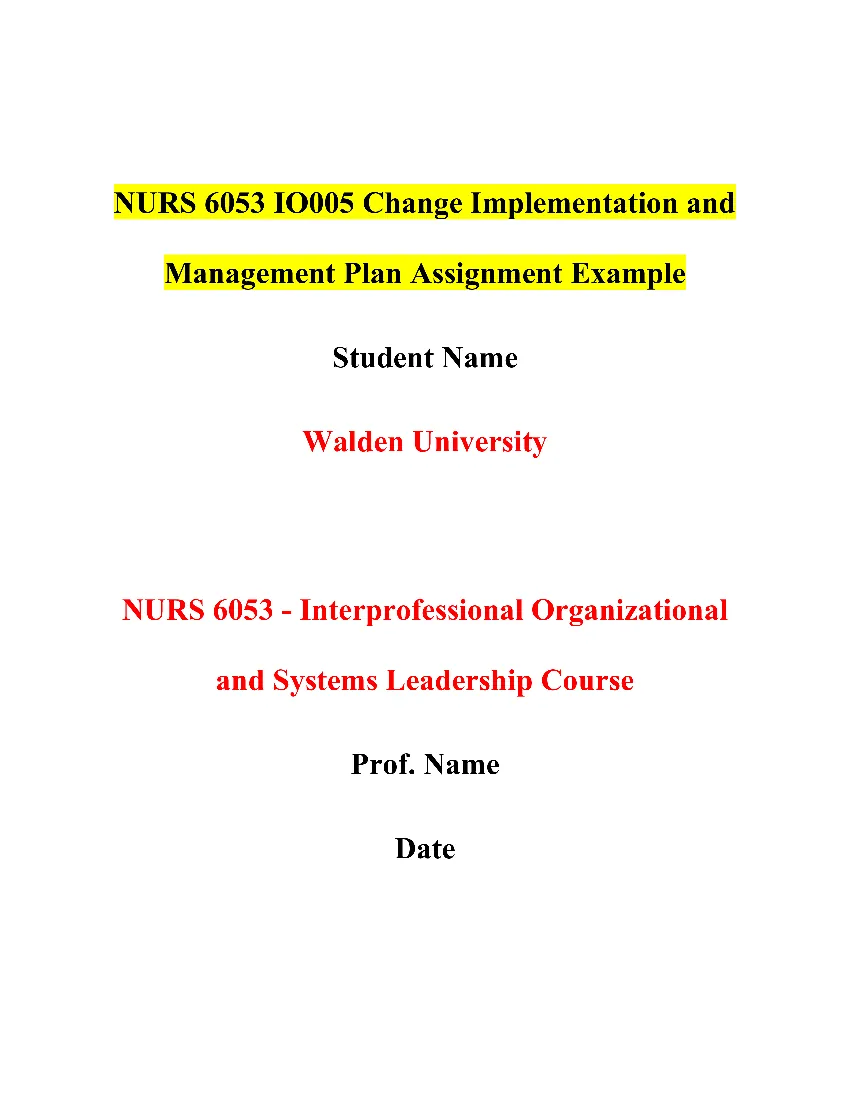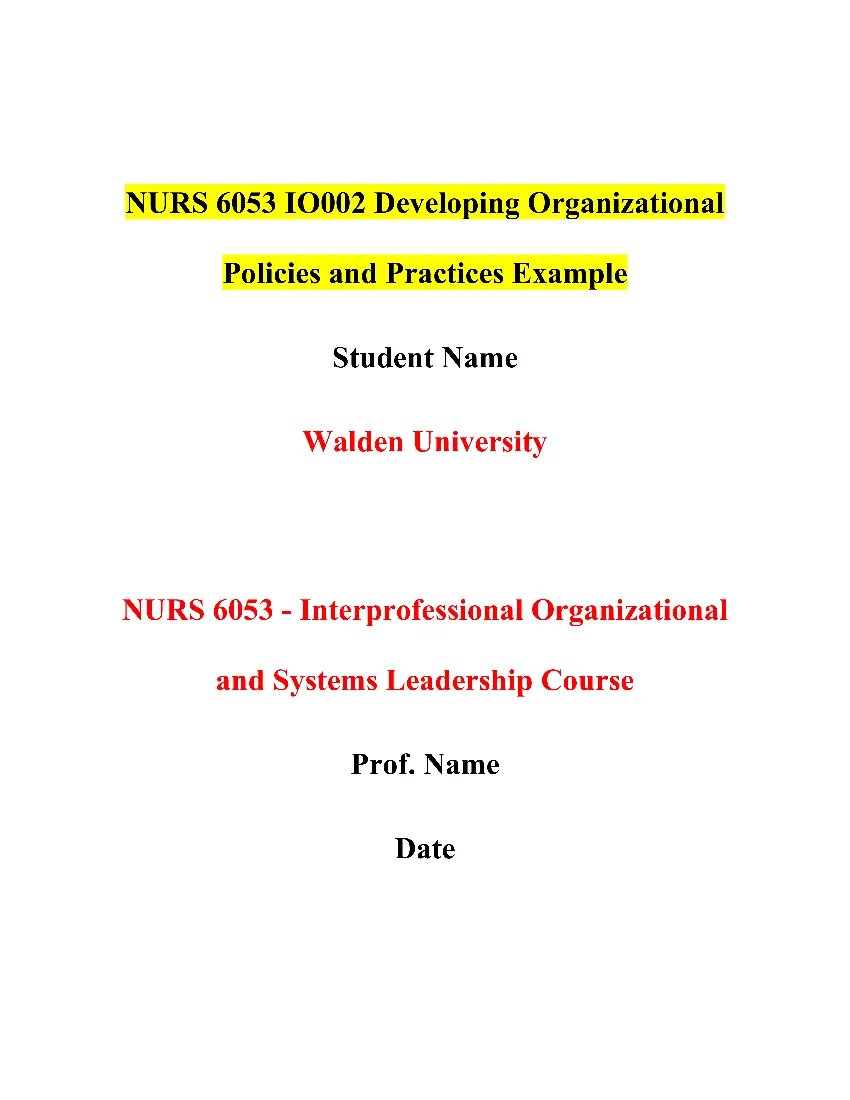Evolving Roles of Nurse Educators in Diverse Environments – C918; Describe Challenges to the Ane Role As A Result Of Dynamic Cultural, Political, And Economic Forces In Healthcare and Society In General

Academic Nurse Educator Interview
The Academic Nurse Educator Interview conducted with Renee Shalvoy, RN, MSN, provided insights into the evolving roles of nurse educators in diverse environments. As an academic nurse educator at a large university in Columbus, Ohio, Renee shared valuable information on the challenges she faces in her role as a result of dynamic cultural, political, and economic forces in healthcare and society in general.
During the interview, Renee elaborated on her job responsibilities and the various roles she handles within the facility. Despite her busy schedule, she was willing to respond to the questions asked, providing detailed and informative answers. The interview primarily focused on the academic nurse educator’s role and the surrounding components, offering valuable insights into the evolving roles of nurse educators in diverse environments.
Check out another task that our nursing essay writing services have assisted another student on Assessing and Diagnosing Patients With Substance-Related and Addictive Disorders & NURS 3600 Intrapersonal Leadership and Professional Growth.
Part A: Evolving Roles Nurse Educators Diverse Environments
Interview guide entailing Questions and Answers
What are the qualities most needed to be a successful advanced nurse educator?
According to Renee Shalvoy, the qualities most needed to be a successful advanced nurse educator include strong communication skills, critical thinking, and the ability to adapt to changing situations. She also emphasizes the importance of being knowledgeable about current healthcare practices, technologies, and trends in nursing education.
Precisely, Renee Shalvoy emphasized on the following attributes for one to be a successful advanced nurse educator:
- Strong communication skills: Nurse educators must be able to communicate effectively with students, colleagues, and other healthcare professionals. Effective communication skills are critical in facilitating learning and building collaborative relationships.
- Clinical expertise: Advanced nurse educators must have a thorough understanding of nursing practice and be able to effectively integrate theoretical knowledge with practical skills.
- Critical thinking skills: Advanced nurse educators must be able to analyze complex situations, evaluate evidence, and make sound decisions.
- Flexibility and adaptability: Nurse Educators must be able to adapt to changing circumstances and be willing to learn new techniques and methods.
- Commitment to lifelong learning: Advanced nurse educators must be dedicated to their ongoing professional development and the development of their students.
Describe challenges to the ANE role as a result of dynamic cultural, political, and economic forces in healthcare and society in general.
The challenges faced by ANEs as a result of dynamic cultural, political, and economic forces in healthcare and society in general include meeting the demands of a diverse student population, navigating changes in healthcare policy and regulations, and adapting to advancements in technology. ANEs must also stay up-to-date with cultural shifts and trends, and provide inclusive and equitable learning environments for all students. Specifically, the evolving roles of nurse educators in diverse environments are usually affected by these challenges in the following ways:
- Cultural diversity: Cultural differences among students can present significant challenges for nurse educators. It is essential to create an inclusive learning environment that values and respects the diversity of students.
- Political forces: Changes in healthcare policies and regulations can impact the delivery of nursing education. Nurse educators must stay informed about these changes and adjust their teaching strategies accordingly.
- Economic forces: Economic factors such as funding cuts and rising tuition costs can impact the ability of students to pursue nursing education. This can also affect the availability of resources and faculty within academic institutions.
- Technological advancements: Rapid changes in technology can impact the delivery of nursing education. Nurse educators must stay up-to-date on emerging technologies and incorporate them into their teaching methods.
As an ANE, in what ways are you a change agent, and how is this achieved within your organization?
Renee Shalvoy notes that as an academic nurse educator, one can act as a change agent by:
- Encouraging innovation and creativity among students and faculty.
- Developing and implementing new teaching methods that promote student engagement and active learning.
- Advocating for changes in the nursing curriculum that reflect the evolving needs of the healthcare system.
- Encouraging collaboration and interdisciplinary education to improve patient outcomes.
Describe your role as an ANE in facilitating student learning in meeting learning outcomes?
As an academic nurse educator, one has a critical role in facilitating student learning and ensuring that students meet the learning outcomes. This can be achieved by:
- Developing clear course objectives and learning outcomes that align with the nursing curriculum.
- Using a variety of teaching strategies and techniques that promote active learning and student engagement.
- Providing timely and constructive feedback to students to help them improve their performance.
- Creating a supportive learning environment that encourages students to seek out additional resources and support when needed.
- Utilizing technology to enhance the learning experience and engage students.
-
How do these responsibilities change over time?
ANE responsibilities change over time as healthcare delivery systems and educational practices evolve. ANEs must continually update their knowledge and skills to keep up with these changes. As new technologies emerge and cultural shifts occur, ANEs must adapt their teaching methods to accommodate the changing needs of their students.
How has technology transformed nursing education and your role as an educator?
Technology has transformed nursing education by providing new tools and resources for teaching and learning. ANEs can use simulation technology, virtual learning environments, and other digital resources to create engaging and effective learning experiences for students. Technology has also made it easier for ANEs to communicate with students and collaborate with other healthcare professionals.
Part B: Evolving Roles Nurse Educators Diverse Environments
Renee Shalvoy is a Master’s of Science in Nursing (MSN) degree holder who works as a nurse educator at the Ohio State University in Columbus, Ohio. According to Hunt (2017), a nurse educator must hold a master’s or doctorate to teach at the university level, and Renee fulfills this requirement. Her job involves teaching courses in the RN to BSN program, which comprises multi-cultural professional adult learners in their mid-20s.
Renee’s work environment is exciting and motivating, and she takes her students through various courses such as Nursing Fundamentals, Evidence-Based Practice and Research, and Oncology Nursing Certification in collaboration with The James Cancer Hospital. She teaches both online and live classes, and her teaching has produced many reputable employees within various hospitals in the nation.
In addition to her teaching responsibilities, Renee works as a nurse educator in collaboration with The James Cancer Hospital outpatient clinic settings, where she onboards new nurses to the organization. She is responsible for creating a two-month orientation calendar specific to the needs of each new employee. Renee’s role is unique in that she is a 50/50 salary employee, half paid from the academic college and half from The Ohio State University Wexner Medical Center.
As an academic nurse educator, Renee’s core responsibilities include designing, updating, evaluating, and implementing nursing education programs in collaboration with the faculty group. She acts as a mentor and advisor to students and conducts numerous assessments to ensure they meet the course objectives. Renee also transfers her skills, experience, and knowledge to her students to prepare them for their future roles in nursing.
From the interview, it is clear that nurse educators have numerous responsibilities, including being leaders, educational advocates, engaging in professional development activities, learning facilitators, and high skilled collaborators and communicators. These responsibilities help to establish a conducive environment for both the learners and other educators, which contributes to the attainment of set objectives.
The role of nurse educators is critical in ensuring that nursing students receive well-packaged information and resources to deliver quality healthcare to patients. Renee’s dual role as an educator in the academic and hospital setting emphasizes the importance of the holistic development of nursing students. Through Renee’s work and experience, it is evident that nurse educators play a vital role in shaping the nursing profession’s future.
Part C: Evolving Roles Nurse Educators Diverse Environments
Roles and responsibilities of an academic nurse educator in ensuring safe, quality patient care in academic and practice settings.
The role of the academic nurse educator goes beyond teaching students theoretical knowledge and practical skills. They also have a responsibility to ensure that their students provide safe, quality patient care in academic and practice settings. This is achieved by teaching nursing students to follow evidence-based practice guidelines and adhere to ethical and legal standards of nursing. ANEs also work closely with clinical instructors to ensure that students are providing safe, quality patient care during clinical rotations.
Renee Shalvoy explains that the nurse educator’s primary responsibility is to ensure that the nursing students understand the importance of patient safety and quality care in academic and practice settings. She mentions that as a nurse educator, she is responsible for ensuring that the students have the necessary knowledge, skills, and critical thinking abilities to deliver safe and high-quality care to their patients.
How the academic nurse educator functions within the parent institution
Academic nurse educators work in a variety of educational institutions, including colleges, universities, and technical schools. They function as faculty members in nursing programs, which means they are responsible for teaching nursing courses and mentoring students. ANEs also participate in faculty meetings and other institutional committees, such as the curriculum committee, to ensure that nursing programs meet accreditation standards and best practices in nursing education.
Renee mentions that the academic nurse educator works within the institution to facilitate the implementation of the nursing curriculum, manage the clinical rotations for nursing students, and evaluate the nursing program’s effectiveness. She also indicates that they collaborate with other departments within the institution to ensure that the nursing program aligns with the institution’s goals and objectives.
Two external stakeholders vital to the role and responsibilities of an ANE
Renee explains that the nursing program’s external stakeholders include the regulatory bodies, such as state boards of nursing, and the healthcare organizations, such as hospitals and clinics.
- Regulatory bodies: Regulatory bodies, such as state boards of nursing, are vital to the role and responsibilities of an ANE. These bodies ensure that nursing programs meet certain standards and that nursing graduates meet the educational and competency requirements to become licensed nurses. ANEs must work closely with these bodies to ensure that their nursing programs meet regulatory standards.
- Healthcare organizations: Healthcare organizations, such as hospitals and clinics, are also important external stakeholders for ANEs. These organizations provide clinical experiences for nursing students and often hire nursing graduates. ANEs must work closely with healthcare organizations to ensure that nursing programs prepare students for the current healthcare environment and provide graduates who can meet the needs of the healthcare workforce.
Two strategies to facilitate communication with external stakeholders.
Two strategies to facilitate communication with external stakeholders are to establish regular communication channels and collaboration with external stakeholders
- Establishing regular communication channels: ANEs should establish regular communication channels with external stakeholders, such as healthcare organizations and regulatory bodies. This may involve regular meetings, email updates, or other forms of communication. By establishing regular channels of communication, ANEs can ensure that they are up-to-date with changes in standards or requirements, and that they are able to communicate their needs and concerns effectively.
ANEs should schedule regular meetings with external stakeholders to discuss program goals, student progress, and any issues that arise. This can help to ensure that everyone is on the same page and that the nursing program is meeting the needs of external stakeholders. Attending nursing conferences for instance, can provide an opportunity to network with other healthcare professionals and learn about the latest advances in nursing education.
- Collaboration: ANEs should collaborate with external stakeholders, such as healthcare organizations and regulatory bodies, to develop partnerships that benefit both parties. This may involve collaborating on educational programs, research projects, or other initiatives. By developing partnerships, ANEs can build trust and establish a shared commitment to improving nursing education and patient care. For example, ANEs could work with healthcare organizations to develop clinical experiences that meet the needs of both the nursing program and the healthcare organization.
How the ANE facilitates the development of interprofessional collaborative efforts.
ANEs play a critical role in facilitating interprofessional collaborative efforts between healthcare professionals. ANEs can do this by developing and implementing interprofessional education programs that bring together nursing students and students from other healthcare disciplines, such as medicine, social work, and pharmacy.
By working collaboratively with other healthcare professionals, nursing students can develop a better understanding of the roles and responsibilities of other healthcare team members, which can enhance communication and improve patient outcomes. ANEs can also encourage nursing students to participate in interprofessional clinical experiences, such as clinical rotations, where they can work alongside other healthcare professionals in a real-world setting.
ANE can also facilitate the development of interprofessional collaborative efforts by serving as a liaison between nursing schools and healthcare organizations. ANEs can work with healthcare organizations to identify areas of need and develop training programs that address these needs. Additionally, ANEs can collaborate with healthcare organizations to develop interprofessional education programs that bring together students from different healthcare disciplines.
Ultimately, ANEs play a crucial role in facilitating interprofessional collaborative efforts by providing nursing students with the necessary knowledge and skills to work effectively with other healthcare professionals. By promoting collaboration and communication among healthcare team members, ANEs can help to improve patient outcomes and deliver safe, quality patient care.
Part D: Evolving Roles Nurse Educators Diverse Environments
The educational system is constantly evolving, and this is especially true for nursing education. Nursing schools and academic institutions are continuously adapting to keep up with the changes in healthcare and technology. One of the significant changes in nursing education is the use of technology, which has transformed the way nursing students learn and the role of nurse educators. With the advancements in technology, nursing education has become more accessible, and students can learn through various online platforms, simulation labs, and other technological tools.
Additionally, the nursing curriculum has also evolved to meet the changing needs of the healthcare industry. Nursing schools are now focusing on preparing students for a diverse range of patients, including those with complex health needs and chronic illnesses. The curriculum is also focused on developing students’ critical thinking and problem-solving skills, which are essential in delivering safe, quality patient care.
Part E: Evolving Roles Nurse Educators Diverse Environments
As I transition to the role of an academic nurse educator, I would focus on developing my skills in curriculum development, teaching, and research. My primary goal would be to provide quality education to nursing students and prepare them for the ever-changing healthcare industry. To achieve this, I would stay up to date with the latest advancements in technology and incorporate them into the nursing curriculum.
I would also collaborate with other healthcare professionals to ensure that the nursing curriculum meets the needs of the healthcare industry. This would involve working with healthcare facilities to identify areas of need and developing training programs that address these needs. Additionally, I would seek to establish relationships with external stakeholders, such as healthcare organizations and community leaders, to promote interprofessional education and enhance patient care.
Furthermore, I would focus on mentoring and supporting nursing students throughout their educational journey. I would encourage them to develop their critical thinking and problem-solving skills and provide them with opportunities to work with other healthcare professionals. Ultimately, my goal as an academic nurse educator would be to prepare nursing students for a successful career in the healthcare industry and to provide safe, quality patient care.
References
du Plessis, P. (2014). Corruption in Education–Stealing the Future. Mediterranean Journal of Social Sciences, 5(23), 1308.
Friedrich, M. J. (2017). Corruption Poses Critical Challenge to Global Health Efforts. Jama, 318(15), 1431-1431.
Hunt, D. D. (2017). The new nurse educator: Mastering academe. Springer Publishing Company.
Kokemuller, N. (2017). Who are the Key Stakeholders involved in Nursing Programs? Retrieved from https://careertrend.com/facts-7488416-key-stakeholders-involved-nursing-programs.html
Raziq, A., & Maulabakhsh, R. (2015). Impact of working environment on job satisfaction. Procedia Economics and Finance, 23, 717-725.
Singh, M. D., Pilkington, F. B., & Patrick, L. (2014). Empowerment and mentoring in nursing academia. International journal of nursing education scholarship, 11(1), 101-111.
Sullivan, M., Kiovsky, R. D., Mason, D. J., Hill, C. D., & Dukes, C. (2015). Interprofessional collaboration and education. AJN The American Journal of Nursing, 115(3), 47-54.
Timmons, S., Evans, C., & Nair, S. (2016). The development of the nursing profession in a globalized context: A qualitative case study in Kerala, India. Social Science & Medicine, 166, 41-48.
Get Expert Writers to Work on Your Evolving Roles Nurse Educators Diverse Environments Paper
Professional nursing paper writers at reliablepapers.com can help students write a great paper on the evolving roles of nurse educators in diverse environments.
Our expert nursing assignment writers have experience in the field of nursing education and can provide guidance on how to approach the topic effectively.
Our writers will help with research, writing, editing, and proofreading to make sure that the final product meets academic standards.
It is important to choose a nursing paper writing service with a good reputation that hires qualified writers with experience in nursing education.
By seeking paper writing help from experts, students can improve their understanding of the subject matter and achieve better grades on their assignments.
You can trust that any academic paper you order from reliablepapers.com will be written to the highest standards.
Hire an Expert Paper Writer on Any Subject, Any Topic, Any Deadline! Submit your paper instructions by placing your order here to get started!


 NURS 6053 IO005 Assignment Module 5: Change Implementation and Management Plan
NURS 6053 IO005 Assignment Module 5: Change Implementation and Management Plan

 NURS 6053 IO004 Module 4 Assignment: Workplace Environment Assessment
NURS 6053 IO004 Module 4 Assignment: Workplace Environment Assessment


 Assignment: Developing Organizational Policies and Practices
Assignment: Developing Organizational Policies and Practices